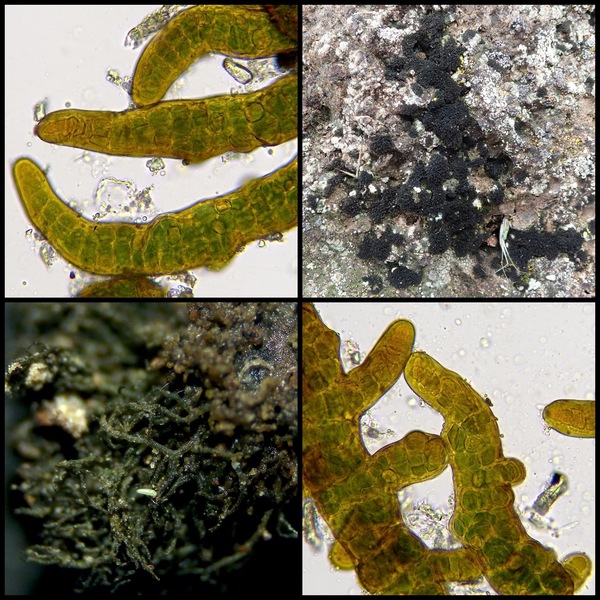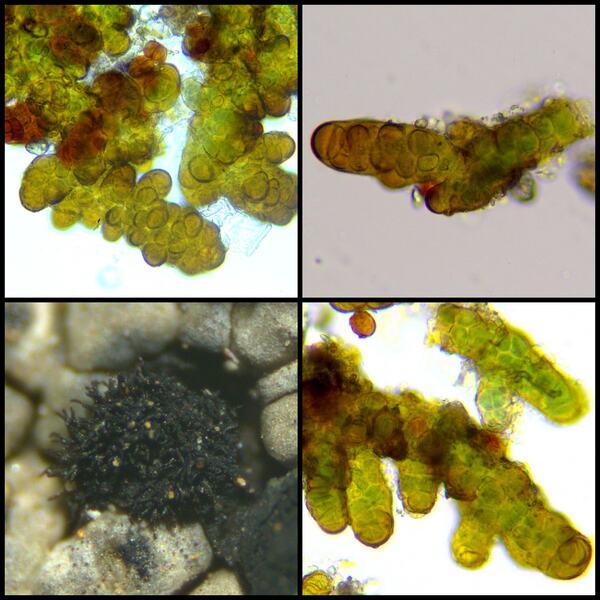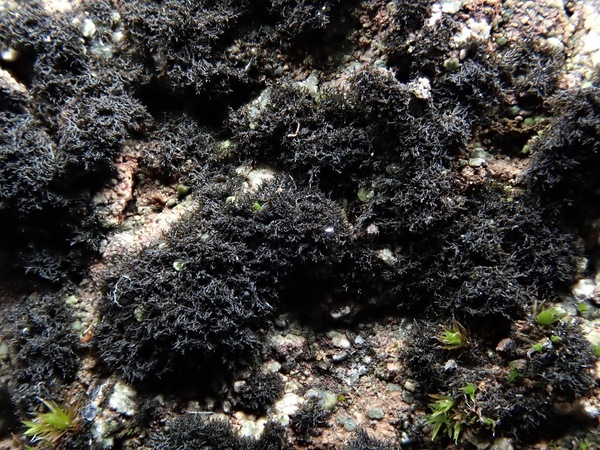Spilonema revertens Nyl.
Flora, 48: 601, 1865
Synonyms: Asirosiphon densatulum Nyl.; Ephebe kerneri Zukal; Spilonema subsimile Nyl.
Distribution:
Description: Thallus minutely shrubby-filamentous, blackish, forming convex, up to 1.5 cm wide and to 6 mm high pillows, the filaments stiff, densely interwoven, erect, up to 6 mm long and to 60 µm thick, branched perpendicularly to the main axis, with blue-green rhizohyphae in the lower 2/3, which consist of 1- or 2-seriate cyanobacterial trichomes surrounded by a gelatinous sheath permeated (except at the tips of filaments) with a network of hyphae; outer hyphae giving rise to thinner hyphae which penetrate among the cyanobacterial cells. Apothecia rather rare, biatorine, 0.2-0.5 mm across, immersed in the thallus, formed laterally on the filaments, with a convex disc, immarginate. Proper exciple thin, of radially arranged hyphae; hymenium 45-55 µm high, pale violet in upper part, I+ blue; paraphyses robust, distinctly septate, sparingly branched, with pointed tips; hypothecium more or less dark violet, paraplectenchymatous. Asci 8-spored, cylindrical, thick-walled, with a K/I+ blue apical thickening. Ascospores 1-celled (rarely with a plasma bridge and thus appearing septate), hyaline, ellipsoid, 7-10(-11) x (2.5-)3-4(-6) µm, often poorly developed. Pycnidia immersed, wart-like, black, up to 0.2 mm across, the wall green-black, N+ red, the conidiogenous cells short, catenate. Conidia acrogenous and pleurogenous, simple, hyaline, short-bacilliform, 2-3 x c. 1 µm. Photobiont cyanobacterial (Stigonema), the cells c. 11-20 x 9-15 µm. Spot tests: all negative. Chemistry: without lichen substances.Note: on damp siliceous rocks along streams, near waterfalls or along seepage tracks; widespread in the Holarctic region, generally not common, but perhaps undercollected and more widespread in the Alps; to be looked for in Italy.
Growth form: Crustose
Substrata: rocks
Photobiont: cyanobacteria, filamentous (e.g. Nostoc, Scytonema)
Reproductive strategy: mainly sexual
On otherwise dry surfaces with short periods of water seepage after rain
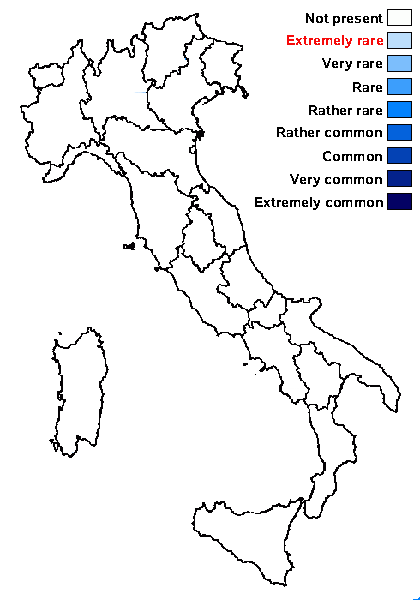
Predictive model
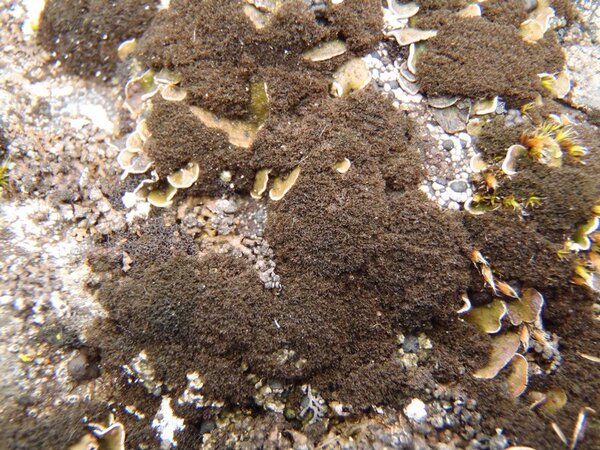

Curtis Randall Björk – CC BY-SA 4.0
Clearwater Valley, BC, First Canyon Uplands Date: 2011-05-05 On cliffs of pillow basalt on south-facing slope, dry, lightly forested
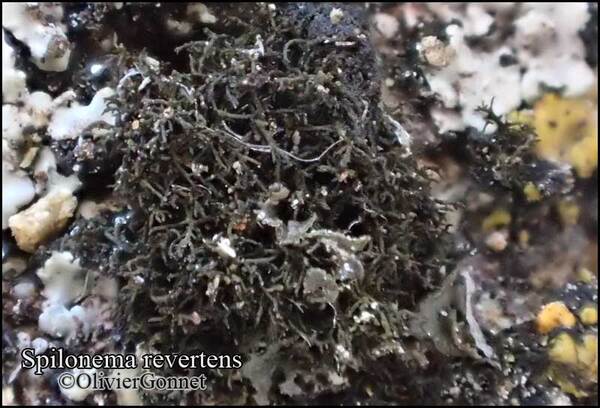
Courtesy Danièle et Olivier Gonnet - Source: https://www.afl-lichenologie.fr/Photos_AFL/Photos_AFL_S/Text_S/Spilonema_revertens.htm
France, stage micro de nov. 2015 - Saint-Prejet-Armandon - Haute-Loire
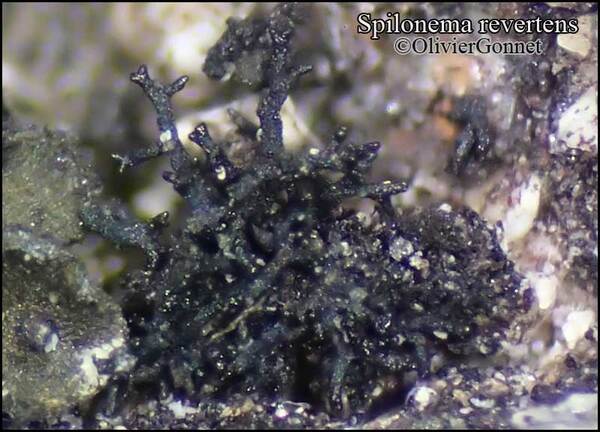
Courtesy Danièle et Olivier Gonnet - Source: https://www.afl-lichenologie.fr/Photos_AFL/Photos_AFL_S/Text_S/Spilonema_revertens.htm
France, stage micro de nov. 2015 - Saint-Prejet-Armandon - Haute-Loire
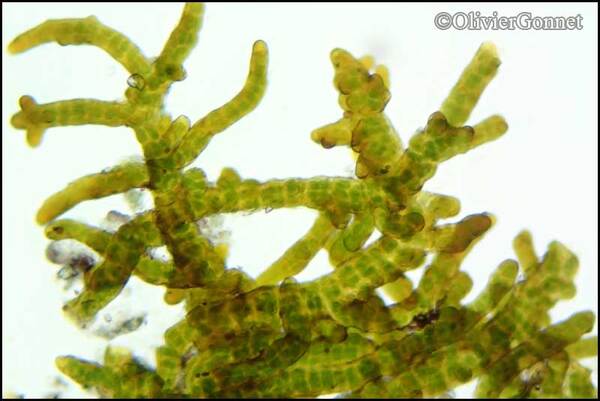
Courtesy Danièle et Olivier Gonnet - Source: https://www.afl-lichenologie.fr/Photos_AFL/Photos_AFL_S/Text_S/Spilonema_revertens.htm
France, stage micro de nov. 2015 - Saint-Prejet-Armandon - Haute-Loire
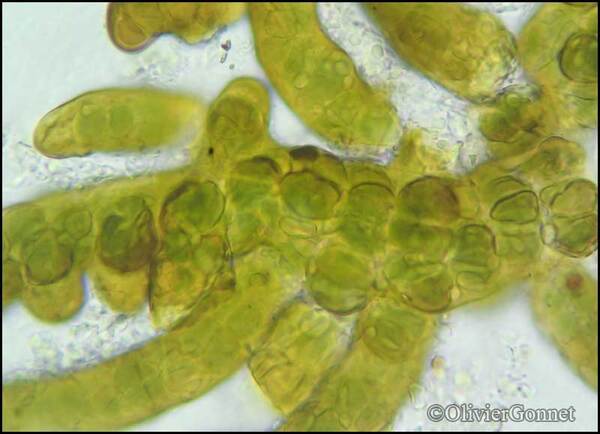
Courtesy Danièle et Olivier Gonnet - Source: https://www.afl-lichenologie.fr/Photos_AFL/Photos_AFL_S/Text_S/Spilonema_revertens.htm
France, stage micro de nov. 2015 - Saint-Prejet-Armandon - Haute-Loire
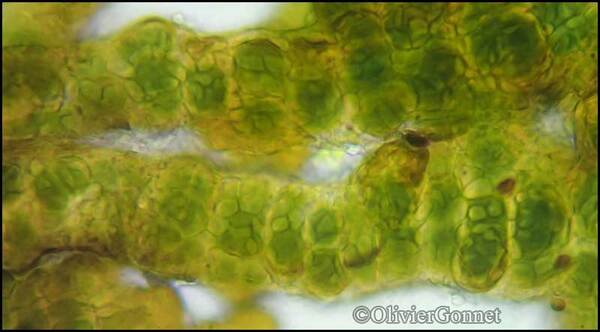
Courtesy Danièle et Olivier Gonnet - Source: https://www.afl-lichenologie.fr/Photos_AFL/Photos_AFL_S/Text_S/Spilonema_revertens.htm
France, stage micro de nov. 2015 - Saint-Prejet-Armandon - Haute-Loire
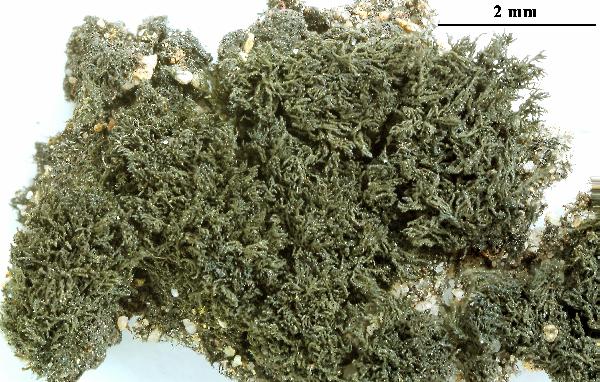

Felix Schumm - CC BY-SA 4.0
[ABL55952], China, Yunnan Prov., Jianchuan Co., 75 km S of Lijiang,
along ridge road in Mt. Shibaoshan Park. Pinus yunannensis and sclerophyll
shrubs among sandstone outcrops, 2500 m, 26°22’50’’ N,
99°49’47’’ E, on sandstone. Leg. A. Aptroot (no 55952), 19.10.2002,
det. M. Schulz, 2005.
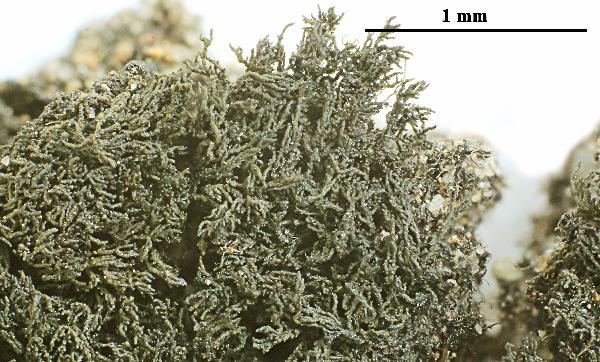

Felix Schumm - CC BY-SA 4.0
[ABL55952], China, Yunnan Prov., Jianchuan Co., 75 km S of Lijiang,
along ridge road in Mt. Shibaoshan Park. Pinus yunannensis and sclerophyll
shrubs among sandstone outcrops, 2500 m, 26°22’50’’ N,
99°49’47’’ E, on sandstone. Leg. A. Aptroot (no 55952), 19.10.2002,
det. M. Schulz, 2005.


Felix Schumm - CC BY-SA 4.0
[ABL55952], China, Yunnan Prov., Jianchuan Co., 75 km S of Lijiang,
along ridge road in Mt. Shibaoshan Park. Pinus yunannensis and sclerophyll
shrubs among sandstone outcrops, 2500 m, 26°22’50’’ N,
99°49’47’’ E, on sandstone. Leg. A. Aptroot (no 55952), 19.10.2002,
det. M. Schulz, 2005.
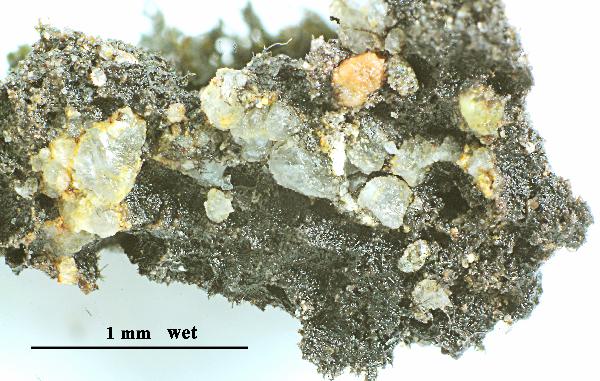

Felix Schumm - CC BY-SA 4.0
[ABL55952], China, Yunnan Prov., Jianchuan Co., 75 km S of Lijiang,
along ridge road in Mt. Shibaoshan Park. Pinus yunannensis and sclerophyll
shrubs among sandstone outcrops, 2500 m, 26°22’50’’ N,
99°49’47’’ E, on sandstone. Leg. A. Aptroot (no 55952), 19.10.2002,
det. M. Schulz, 2005.
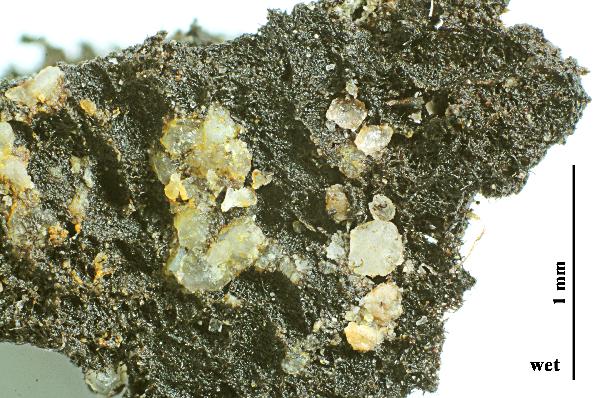

Felix Schumm - CC BY-SA 4.0
[ABL55952], China, Yunnan Prov., Jianchuan Co., 75 km S of Lijiang,
along ridge road in Mt. Shibaoshan Park. Pinus yunannensis and sclerophyll
shrubs among sandstone outcrops, 2500 m, 26°22’50’’ N,
99°49’47’’ E, on sandstone. Leg. A. Aptroot (no 55952), 19.10.2002,
det. M. Schulz, 2005.


Felix Schumm - CC BY-SA 4.0
[ABL55952], China, Yunnan Prov., Jianchuan Co., 75 km S of Lijiang,
along ridge road in Mt. Shibaoshan Park. Pinus yunannensis and sclerophyll
shrubs among sandstone outcrops, 2500 m, 26°22’50’’ N,
99°49’47’’ E, on sandstone. Leg. A. Aptroot (no 55952), 19.10.2002,
det. M. Schulz, 2005.
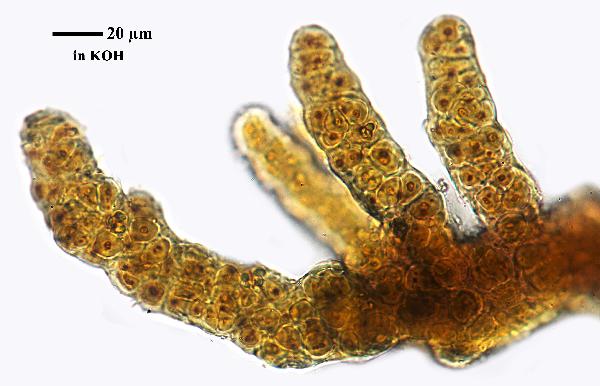

Felix Schumm - CC BY-SA 4.0
[ABL55952], China, Yunnan Prov., Jianchuan Co., 75 km S of Lijiang,
along ridge road in Mt. Shibaoshan Park. Pinus yunannensis and sclerophyll
shrubs among sandstone outcrops, 2500 m, 26°22’50’’ N,
99°49’47’’ E, on sandstone. Leg. A. Aptroot (no 55952), 19.10.2002,
det. M. Schulz, 2005.


Felix Schumm - CC BY-SA 4.0
[ABL55952], China, Yunnan Prov., Jianchuan Co., 75 km S of Lijiang,
along ridge road in Mt. Shibaoshan Park. Pinus yunannensis and sclerophyll
shrubs among sandstone outcrops, 2500 m, 26°22’50’’ N,
99°49’47’’ E, on sandstone. Leg. A. Aptroot (no 55952), 19.10.2002,
det. M. Schulz, 2005.
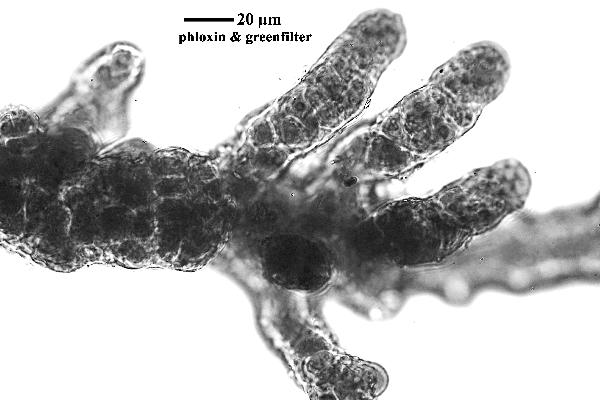

Felix Schumm - CC BY-SA 4.0
[ABL55952], China, Yunnan Prov., Jianchuan Co., 75 km S of Lijiang,
along ridge road in Mt. Shibaoshan Park. Pinus yunannensis and sclerophyll
shrubs among sandstone outcrops, 2500 m, 26°22’50’’ N,
99°49’47’’ E, on sandstone. Leg. A. Aptroot (no 55952), 19.10.2002,
det. M. Schulz, 2005.
Growth form: Crustose
Substrata: rocks
Photobiont: cyanobacteria, filamentous (e.g. Nostoc, Scytonema)
Reproductive strategy: mainly sexual
On otherwise dry surfaces with short periods of water seepage after rain

Predictive model


Curtis Randall Björk – CC BY-SA 4.0
Clearwater Valley, BC, First Canyon Uplands Date: 2011-05-05 On cliffs of pillow basalt on south-facing slope, dry, lightly forested

Courtesy Danièle et Olivier Gonnet - Source: https://www.afl-lichenologie.fr/Photos_AFL/Photos_AFL_S/Text_S/Spilonema_revertens.htm
France, stage micro de nov. 2015 - Saint-Prejet-Armandon - Haute-Loire

Courtesy Danièle et Olivier Gonnet - Source: https://www.afl-lichenologie.fr/Photos_AFL/Photos_AFL_S/Text_S/Spilonema_revertens.htm
France, stage micro de nov. 2015 - Saint-Prejet-Armandon - Haute-Loire

Courtesy Danièle et Olivier Gonnet - Source: https://www.afl-lichenologie.fr/Photos_AFL/Photos_AFL_S/Text_S/Spilonema_revertens.htm
France, stage micro de nov. 2015 - Saint-Prejet-Armandon - Haute-Loire

Courtesy Danièle et Olivier Gonnet - Source: https://www.afl-lichenologie.fr/Photos_AFL/Photos_AFL_S/Text_S/Spilonema_revertens.htm
France, stage micro de nov. 2015 - Saint-Prejet-Armandon - Haute-Loire

Courtesy Danièle et Olivier Gonnet - Source: https://www.afl-lichenologie.fr/Photos_AFL/Photos_AFL_S/Text_S/Spilonema_revertens.htm
France, stage micro de nov. 2015 - Saint-Prejet-Armandon - Haute-Loire


Felix Schumm - CC BY-SA 4.0
[ABL55952], China, Yunnan Prov., Jianchuan Co., 75 km S of Lijiang, along ridge road in Mt. Shibaoshan Park. Pinus yunannensis and sclerophyll shrubs among sandstone outcrops, 2500 m, 26°22’50’’ N, 99°49’47’’ E, on sandstone. Leg. A. Aptroot (no 55952), 19.10.2002, det. M. Schulz, 2005.


Felix Schumm - CC BY-SA 4.0
[ABL55952], China, Yunnan Prov., Jianchuan Co., 75 km S of Lijiang, along ridge road in Mt. Shibaoshan Park. Pinus yunannensis and sclerophyll shrubs among sandstone outcrops, 2500 m, 26°22’50’’ N, 99°49’47’’ E, on sandstone. Leg. A. Aptroot (no 55952), 19.10.2002, det. M. Schulz, 2005.


Felix Schumm - CC BY-SA 4.0
[ABL55952], China, Yunnan Prov., Jianchuan Co., 75 km S of Lijiang, along ridge road in Mt. Shibaoshan Park. Pinus yunannensis and sclerophyll shrubs among sandstone outcrops, 2500 m, 26°22’50’’ N, 99°49’47’’ E, on sandstone. Leg. A. Aptroot (no 55952), 19.10.2002, det. M. Schulz, 2005.


Felix Schumm - CC BY-SA 4.0
[ABL55952], China, Yunnan Prov., Jianchuan Co., 75 km S of Lijiang, along ridge road in Mt. Shibaoshan Park. Pinus yunannensis and sclerophyll shrubs among sandstone outcrops, 2500 m, 26°22’50’’ N, 99°49’47’’ E, on sandstone. Leg. A. Aptroot (no 55952), 19.10.2002, det. M. Schulz, 2005.


Felix Schumm - CC BY-SA 4.0
[ABL55952], China, Yunnan Prov., Jianchuan Co., 75 km S of Lijiang, along ridge road in Mt. Shibaoshan Park. Pinus yunannensis and sclerophyll shrubs among sandstone outcrops, 2500 m, 26°22’50’’ N, 99°49’47’’ E, on sandstone. Leg. A. Aptroot (no 55952), 19.10.2002, det. M. Schulz, 2005.


Felix Schumm - CC BY-SA 4.0
[ABL55952], China, Yunnan Prov., Jianchuan Co., 75 km S of Lijiang, along ridge road in Mt. Shibaoshan Park. Pinus yunannensis and sclerophyll shrubs among sandstone outcrops, 2500 m, 26°22’50’’ N, 99°49’47’’ E, on sandstone. Leg. A. Aptroot (no 55952), 19.10.2002, det. M. Schulz, 2005.


Felix Schumm - CC BY-SA 4.0
[ABL55952], China, Yunnan Prov., Jianchuan Co., 75 km S of Lijiang, along ridge road in Mt. Shibaoshan Park. Pinus yunannensis and sclerophyll shrubs among sandstone outcrops, 2500 m, 26°22’50’’ N, 99°49’47’’ E, on sandstone. Leg. A. Aptroot (no 55952), 19.10.2002, det. M. Schulz, 2005.


Felix Schumm - CC BY-SA 4.0
[ABL55952], China, Yunnan Prov., Jianchuan Co., 75 km S of Lijiang, along ridge road in Mt. Shibaoshan Park. Pinus yunannensis and sclerophyll shrubs among sandstone outcrops, 2500 m, 26°22’50’’ N, 99°49’47’’ E, on sandstone. Leg. A. Aptroot (no 55952), 19.10.2002, det. M. Schulz, 2005.


 INDEX FUNGORUM
INDEX FUNGORUM
 GBIF
GBIF
